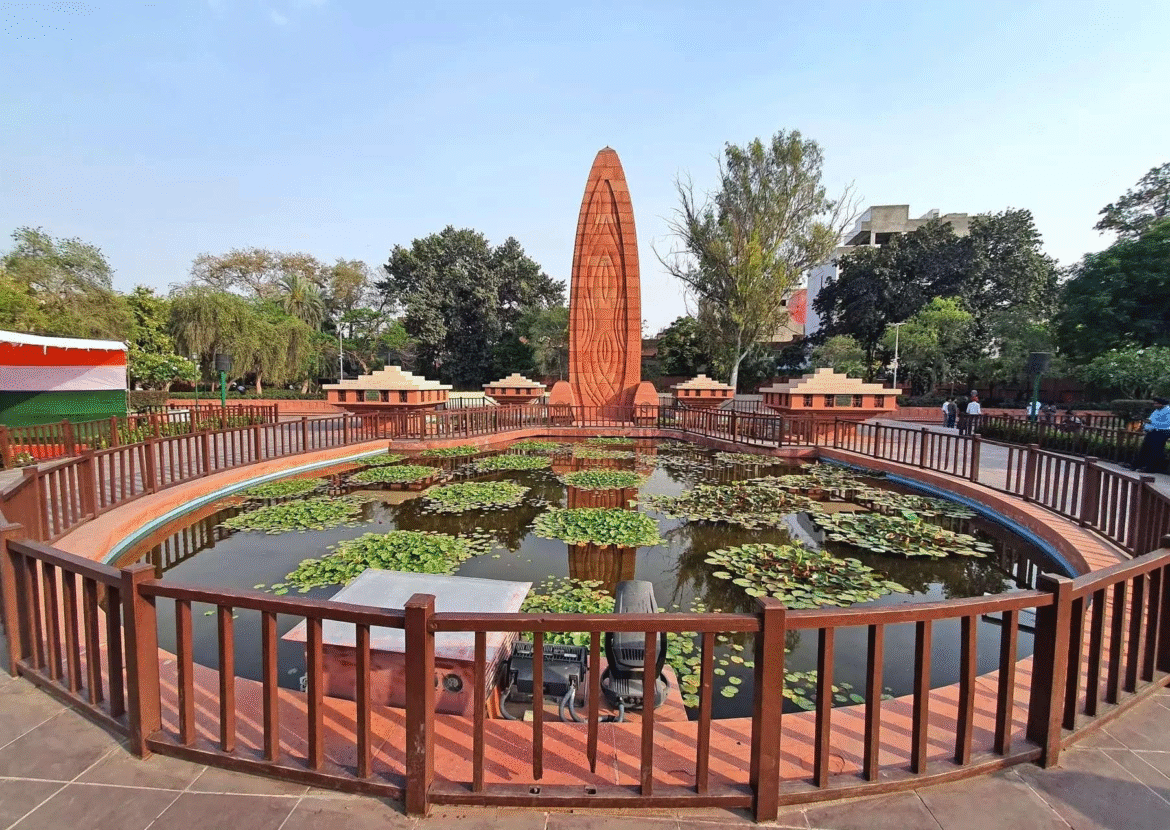AI Generated Summary
- As the nation prepares to mark the 106th anniversary of the Jallianwala Bagh massacre next year, the debate over the site’s sanctity may prove to be a defining moment in how India chooses to preserve — and respect — its historical memory.
- Now, amid rising tourist numbers during the summer and an influx of pilgrims to the nearby Golden Temple, concerns over the site’s preservation are growing louder — particularly about the eternal flame, a symbolic tribute to the victims.
- INTACH and other heritage groups are now calling for the eternal flame to be relocated to a more prominent, weather-protected space, as well as for greater oversight on how the site is used.
A promotional event for the upcoming film Kesari 2, held at the historic site of Jallianwala Bagh, has sparked widespread criticism from heritage experts, activists, and descendants of the massacre victims. The event, featuring Bollywood actors Akshay Kumar, R Madhavan, Ananya Pandey, Gurdas Maan and Gurpreet Ghuggi, was intended to build anticipation for the film — a fictionalized account of the aftermath of the 1919 Jallianwala Bagh massacre. Instead, it has reignited a heated debate over how India treats its places of historical trauma.
While the promotional tour chose Jallianwala Bagh to reflect the film’s subject matter, conservationists argue that the decision blurred the line between remembrance and entertainment. “This isn’t just a backdrop,” said one local activist. “It’s a place where hundreds of innocent people were massacred. Turning it into a venue for celebrity interactions dishonours their memory.”
This is not the first time Jallianwala Bagh has faced backlash for being used in ways that critics say trivialize its past. Controversy first flared in 2021, when the site underwent a major aesthetic renovation under a Central Government initiative. The revamp added murals, sound-and-light features and sculptural walkways — enhancements that many felt “sanitised” the site and distracted from its sombre history.
Now, amid rising tourist numbers during the summer and an influx of pilgrims to the nearby Golden Temple, concerns over the site’s preservation are growing louder — particularly about the eternal flame, a symbolic tribute to the victims.
According to Maj Gen Balwinder Singh (Retd), Punjab State Convener of the Indian National Trust for Art and Cultural Heritage (INTACH), the flame’s current location fails to reflect its intended significance. “It stands in an open area, exposed to weather extremes and positioned on hot marble — making it difficult to approach, especially barefoot, which is customary here,” he said.
Singh, a respected voice in cultural preservation, argued that the flame should have been placed near the war memorial — a more appropriate and prominent setting. “The eternal flame should embody continuity, not be something visitors can overlook or avoid due to practical discomfort. It must transcend weather, seasons, and even time, reminding us of what was lost — and what we must carry forward,” he added.
Singh’s concerns are echoed by several cultural organisations and family members of the massacre’s victims. Many fear that Jallianwala Bagh is being reduced to a tourist attraction or “selfie spot,” rather than being preserved as a solemn space for reflection.
INTACH and other heritage groups are now calling for the eternal flame to be relocated to a more prominent, weather-protected space, as well as for greater oversight on how the site is used. They propose stricter regulation of commercial events and more educational programming that honours the site’s historical and emotional weight.
“The purpose of a memorial is not to entertain,” Singh said. “It is to remember, to learn, and to ensure that such tragedies are never repeated.”
As the nation prepares to mark the 106th anniversary of the Jallianwala Bagh massacre next year, the debate over the site’s sanctity may prove to be a defining moment in how India chooses to preserve — and respect — its historical memory.




